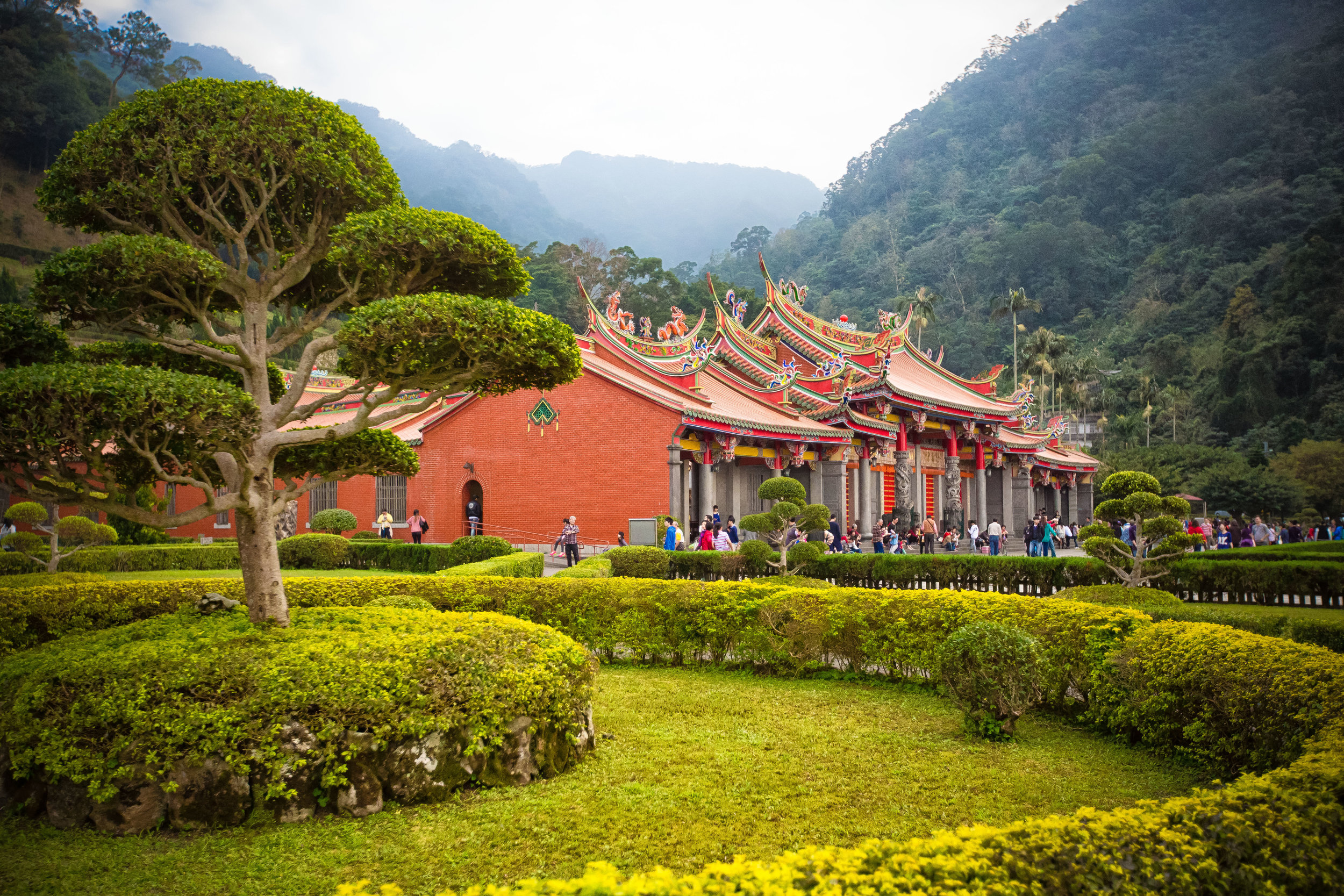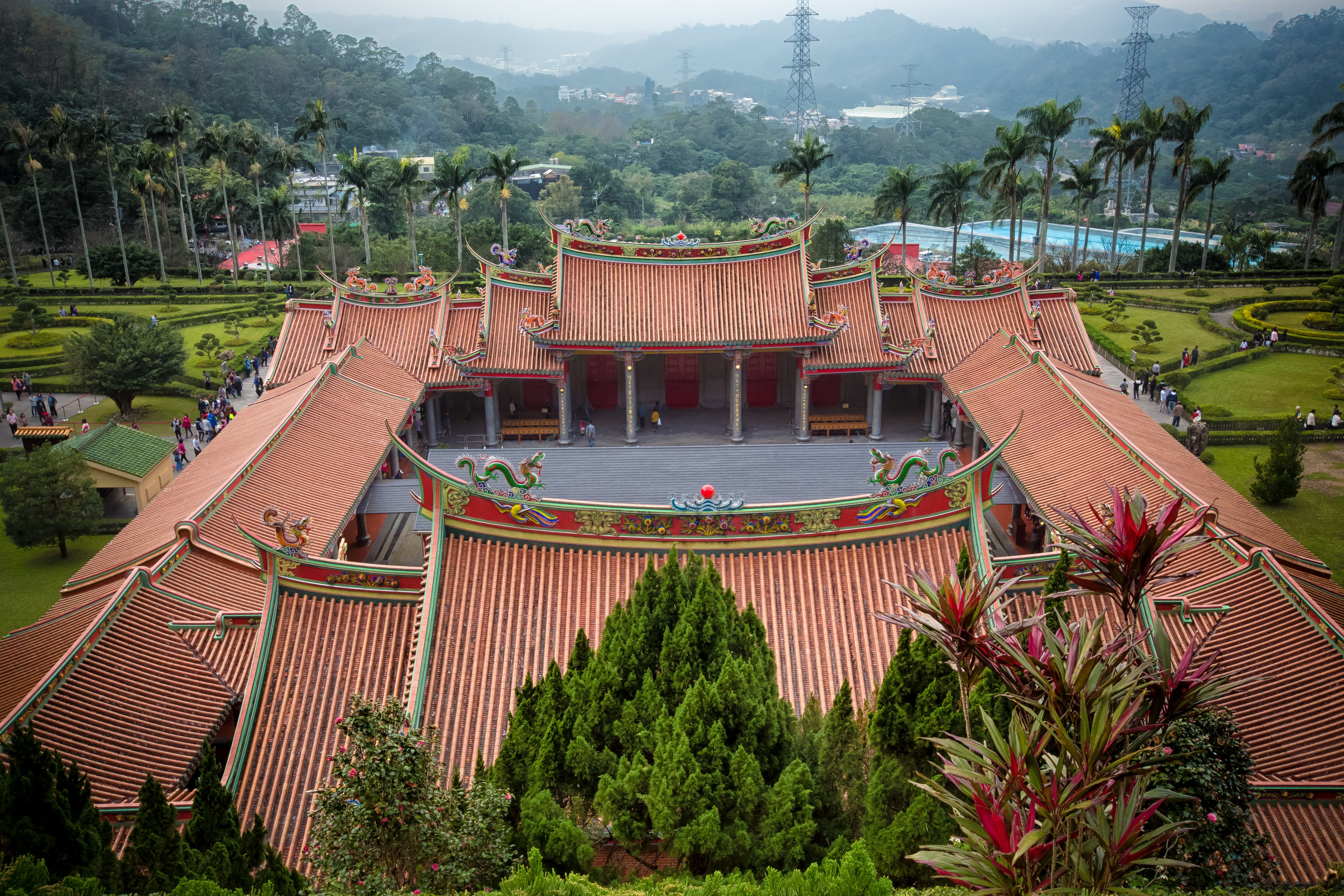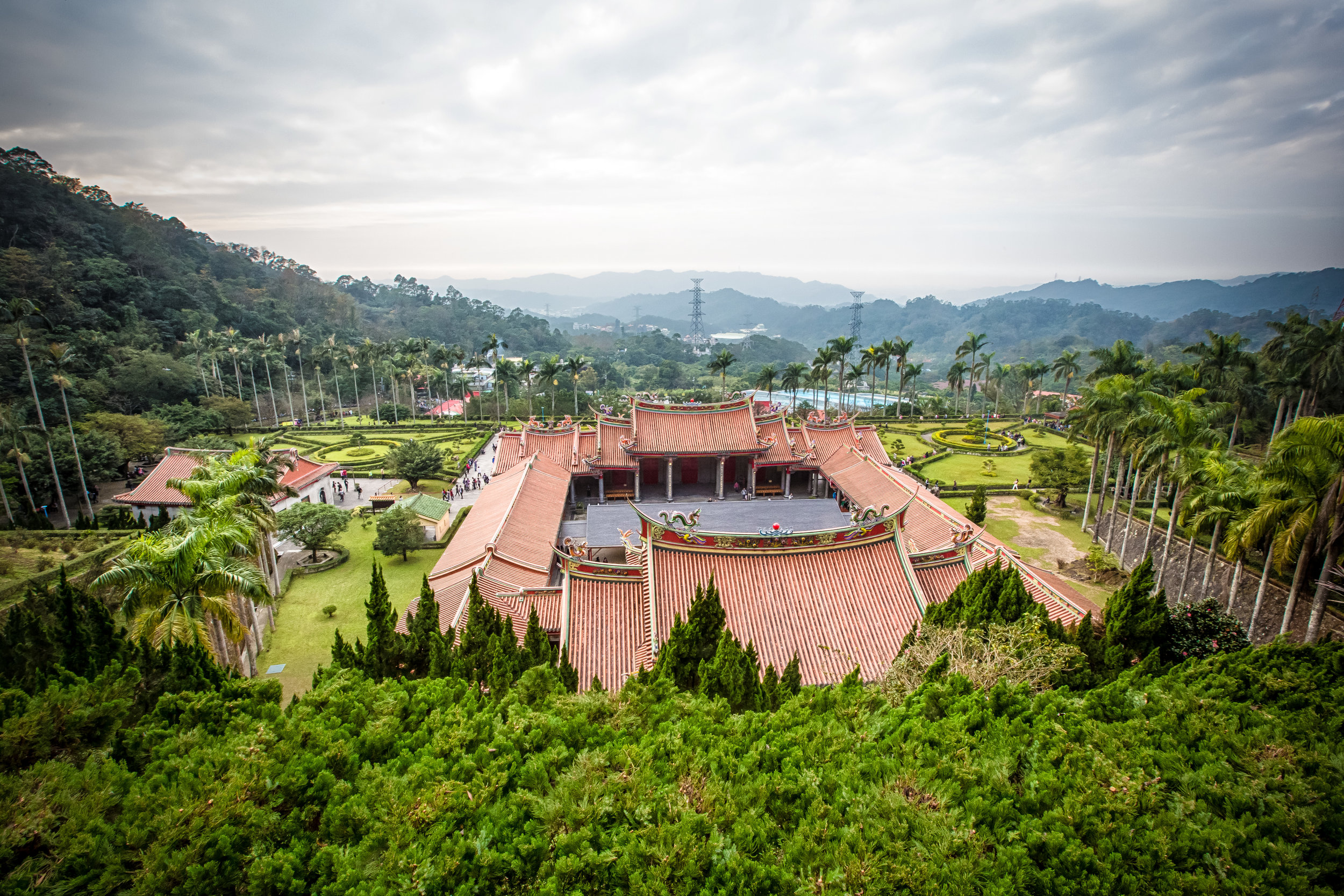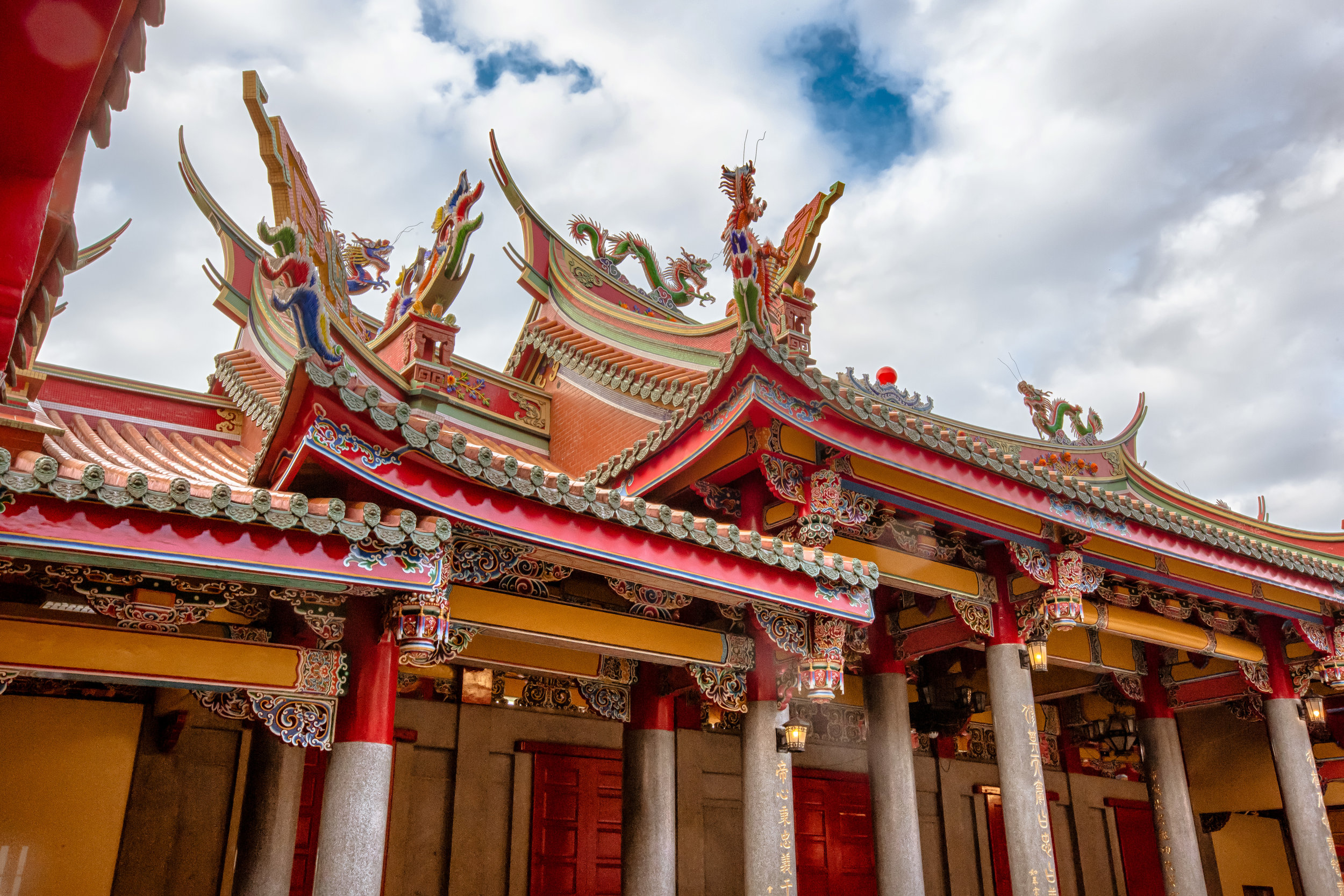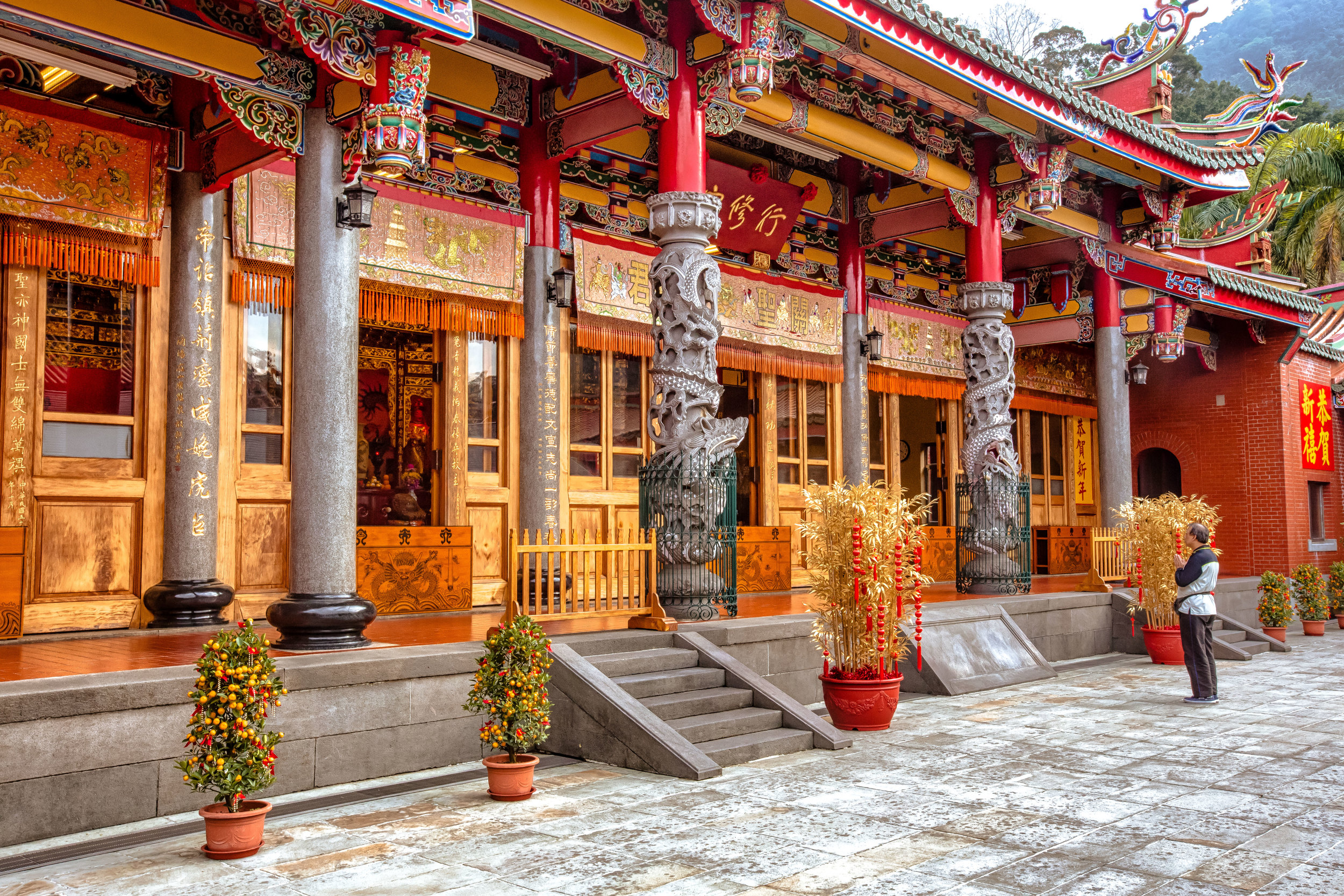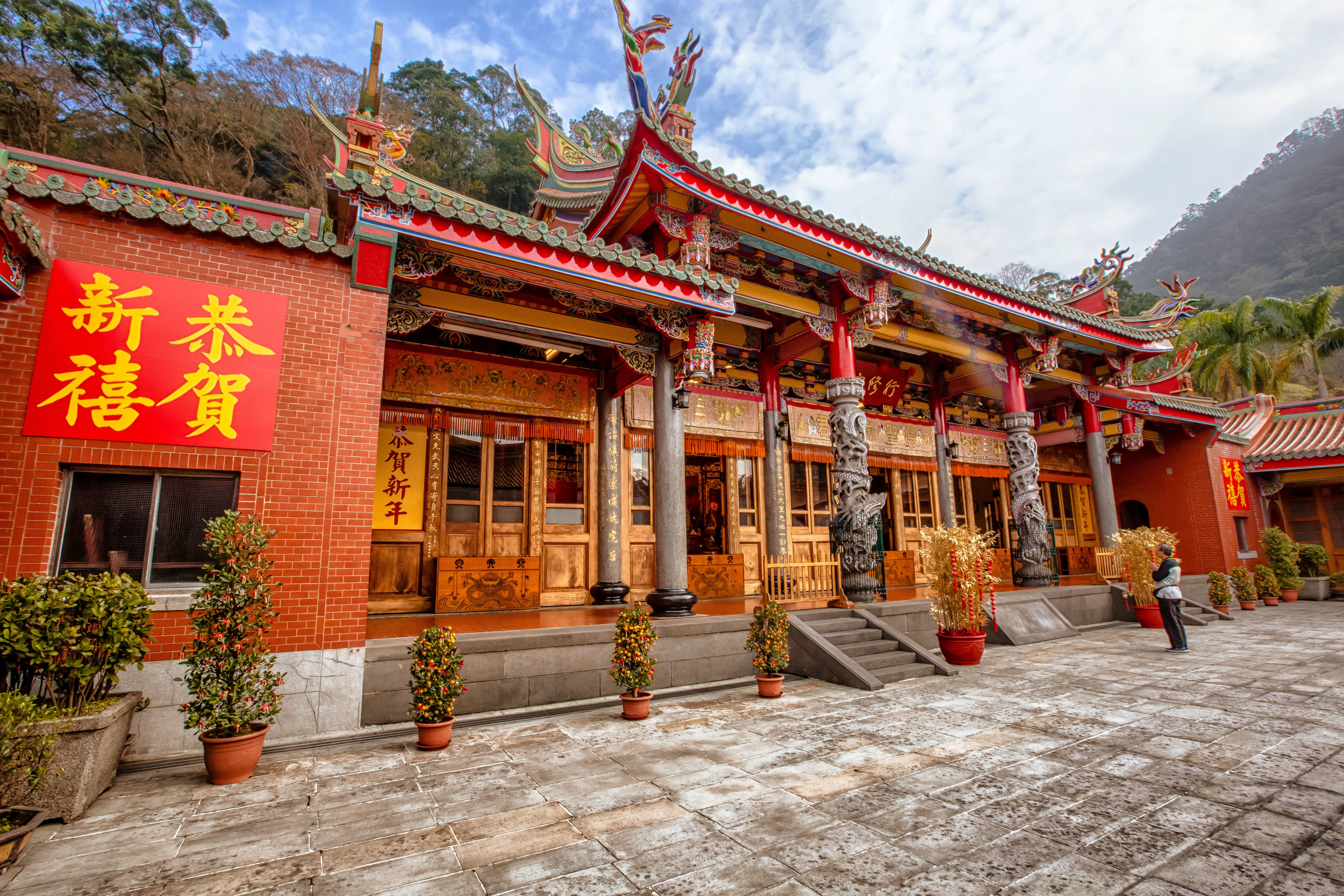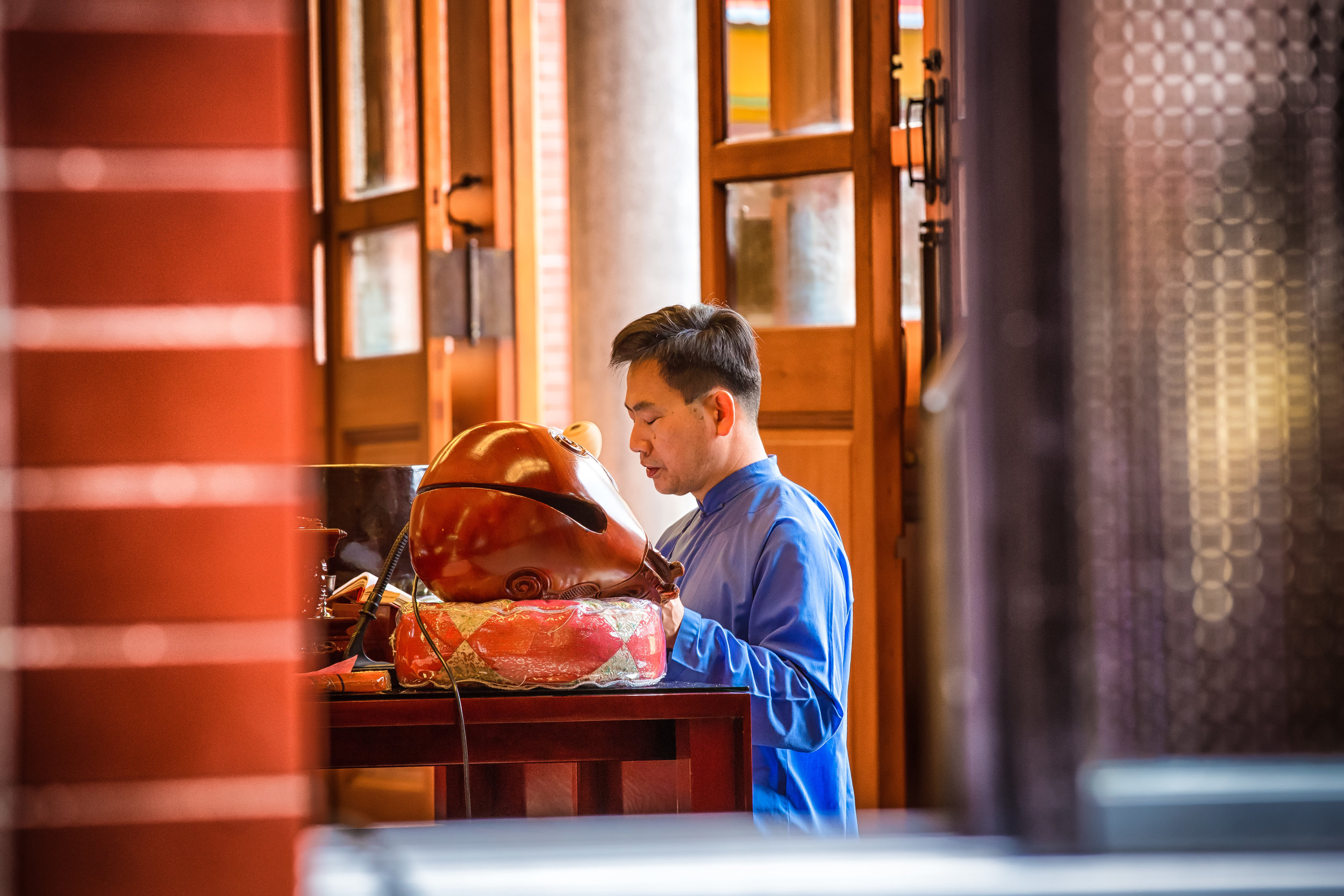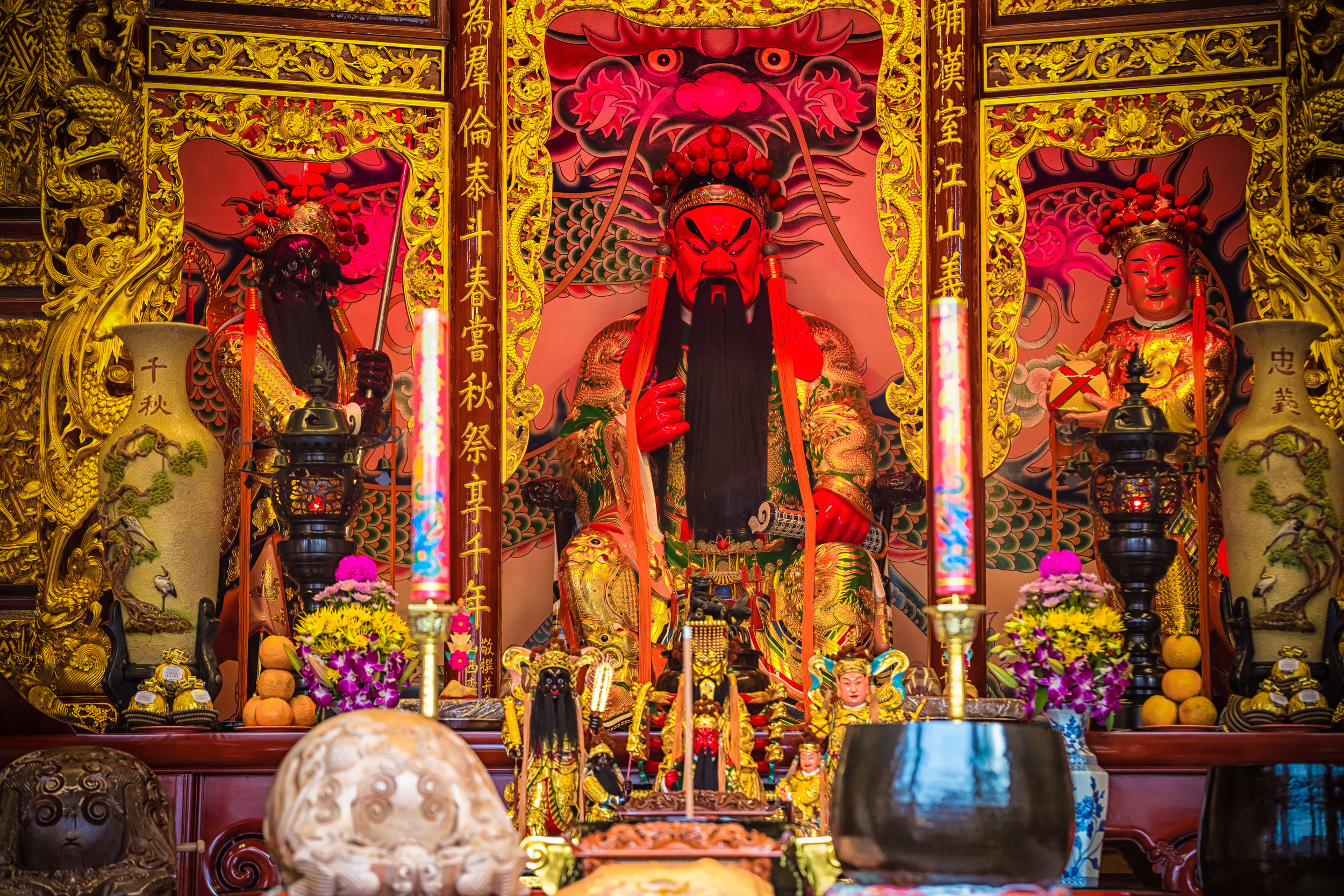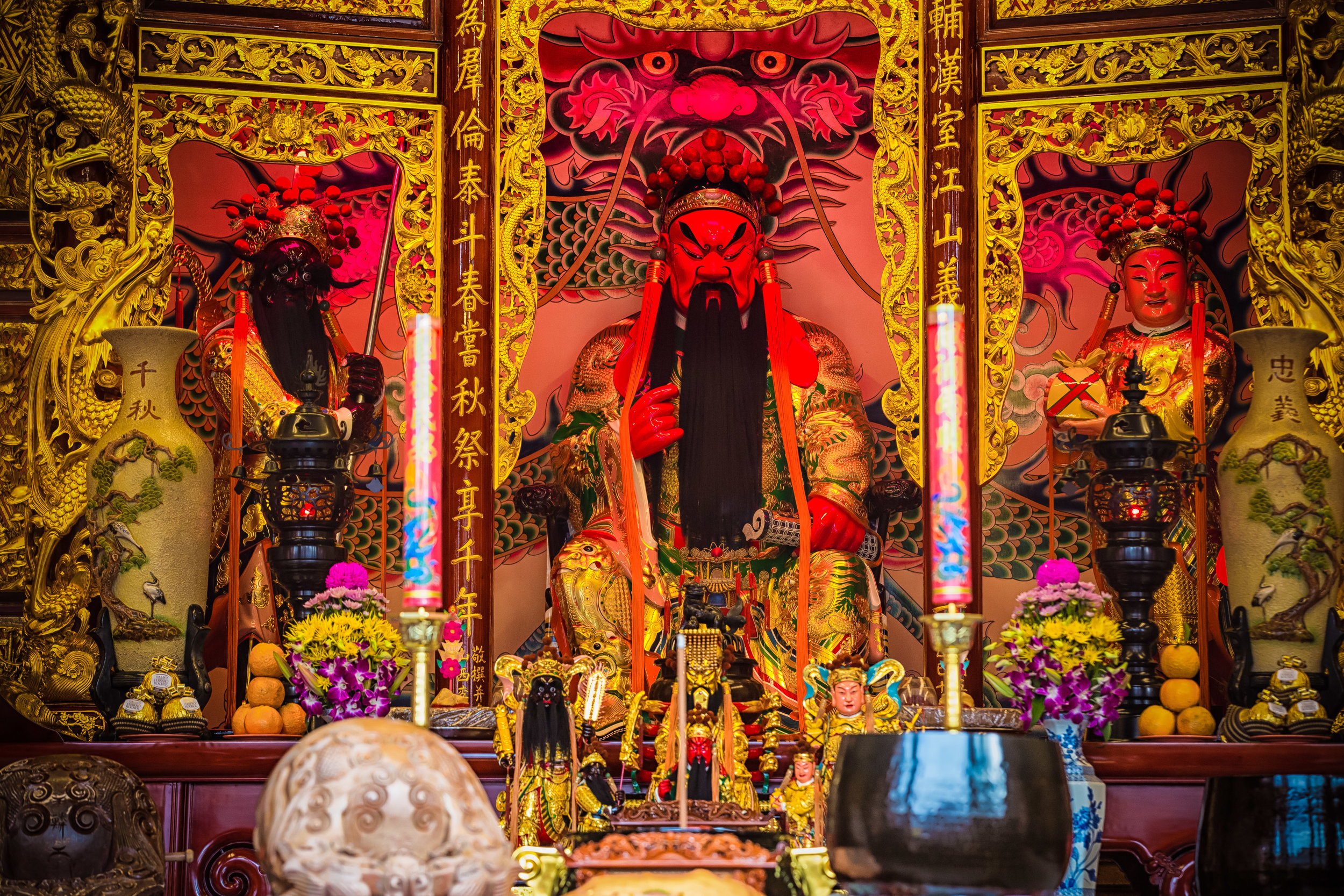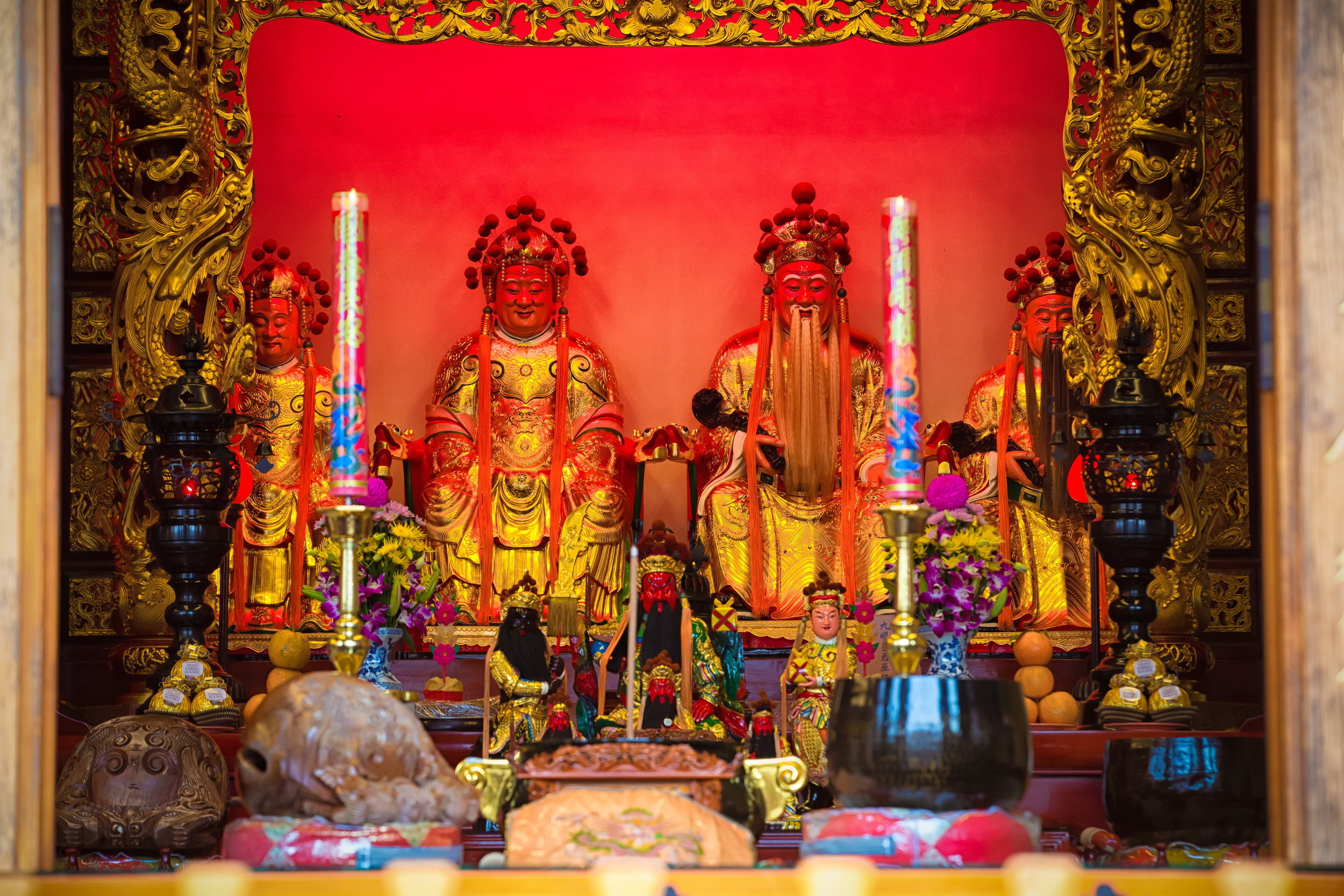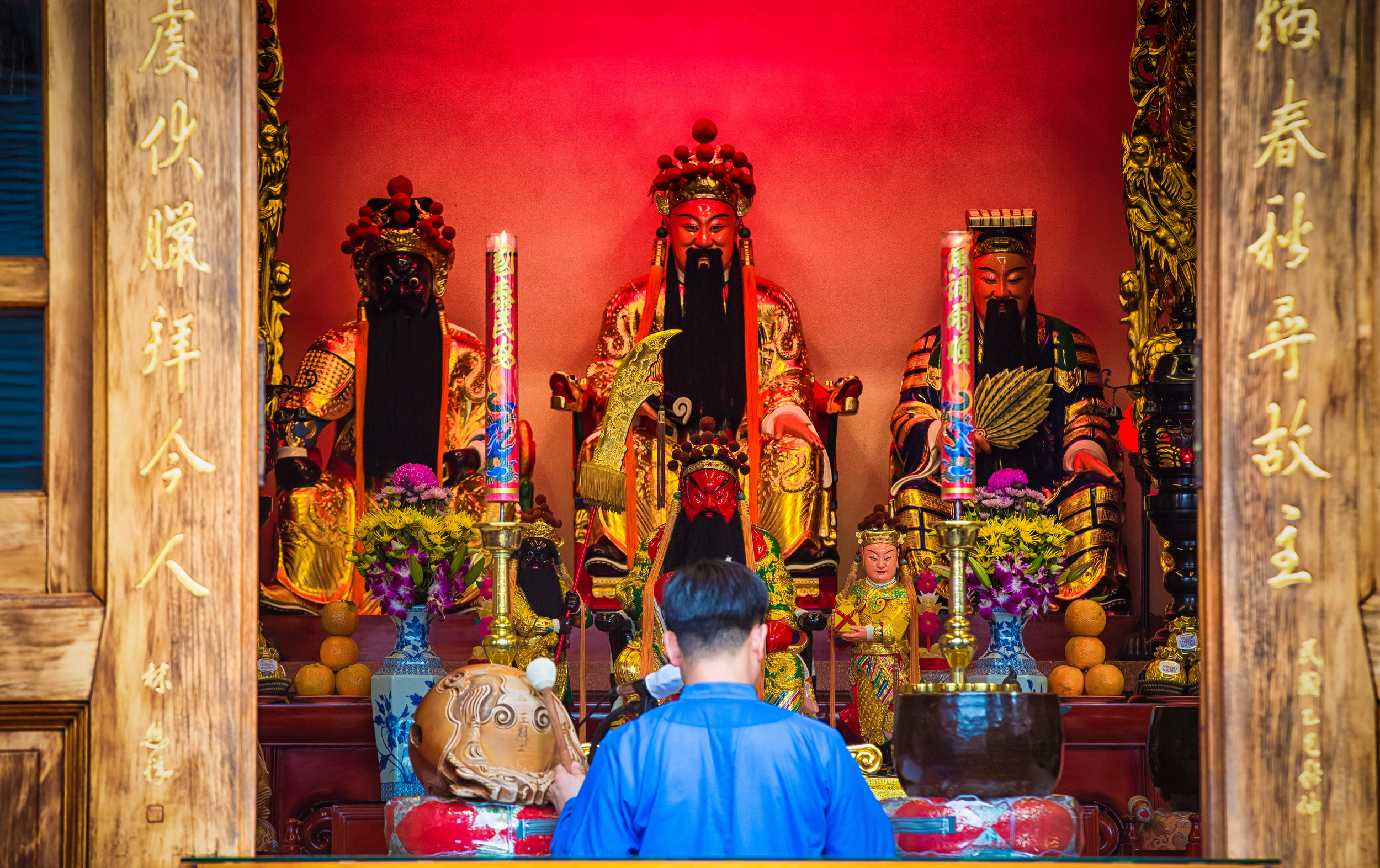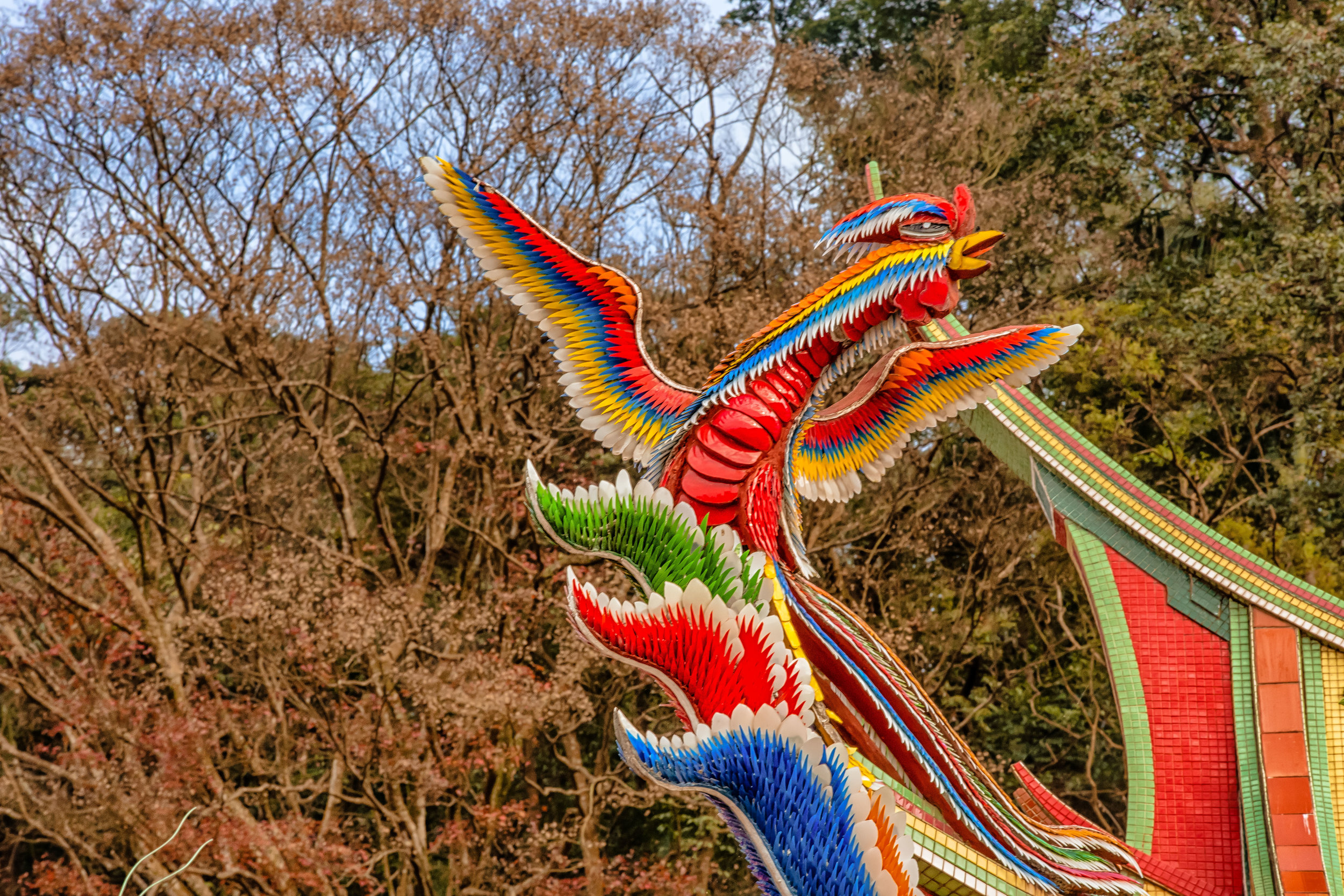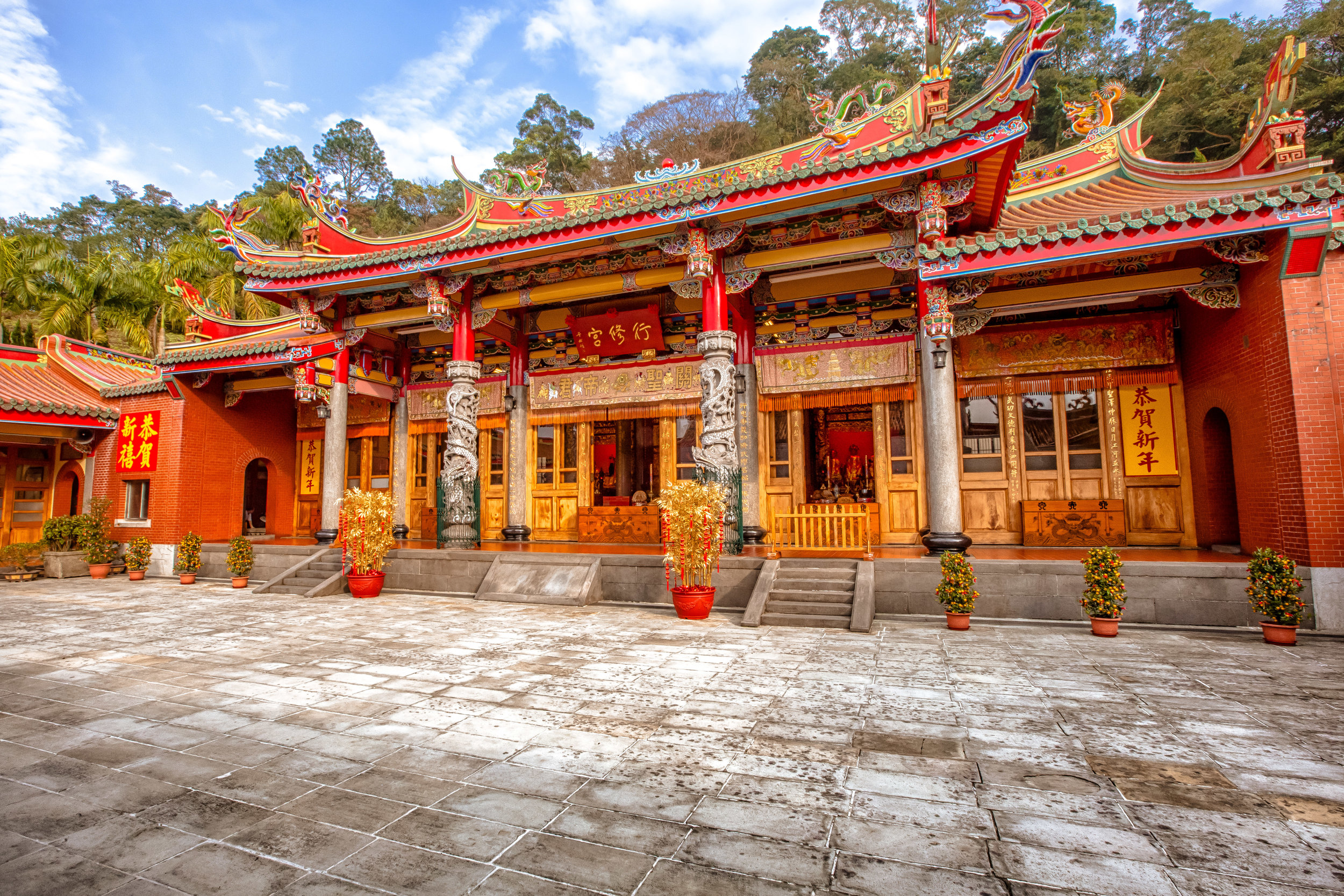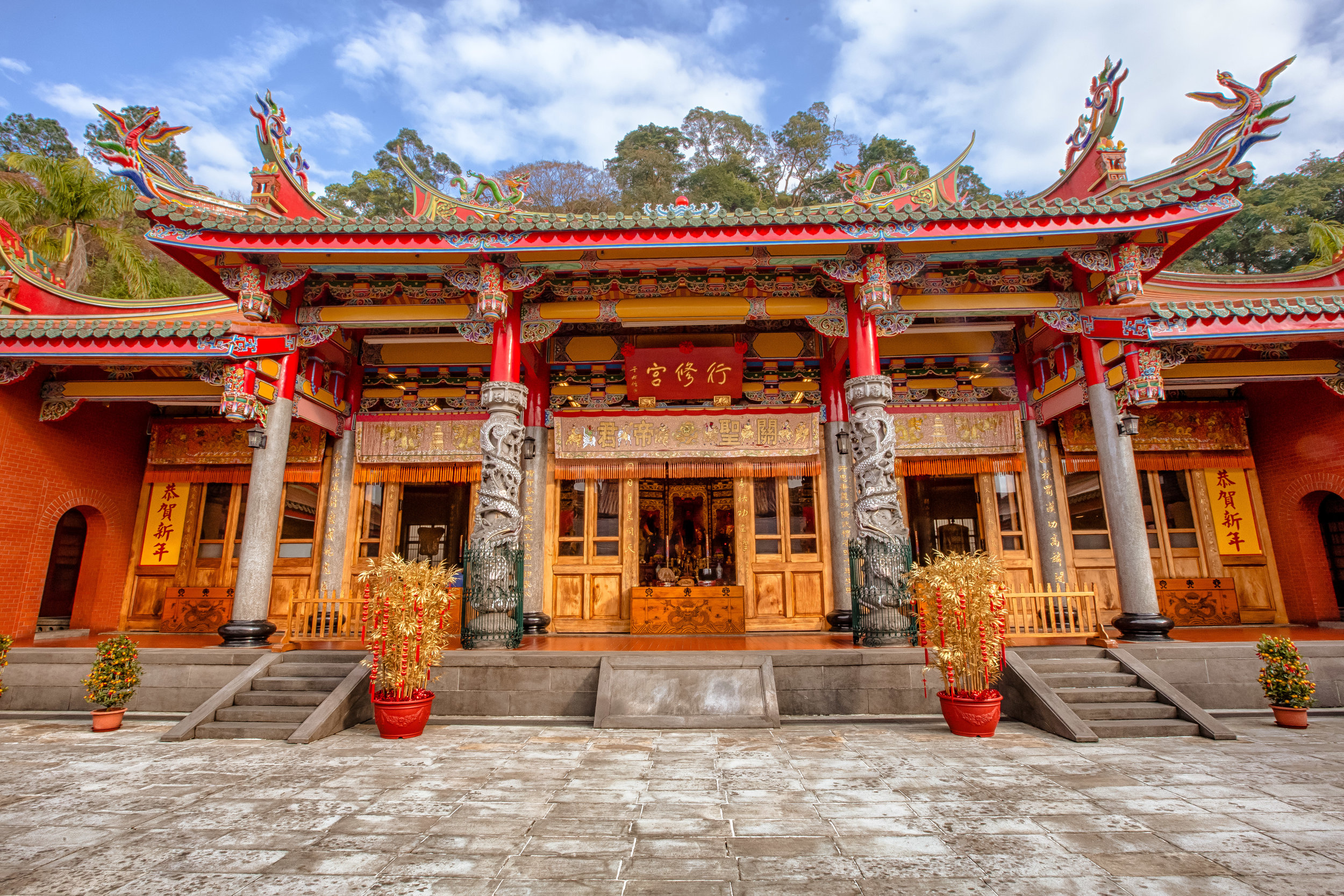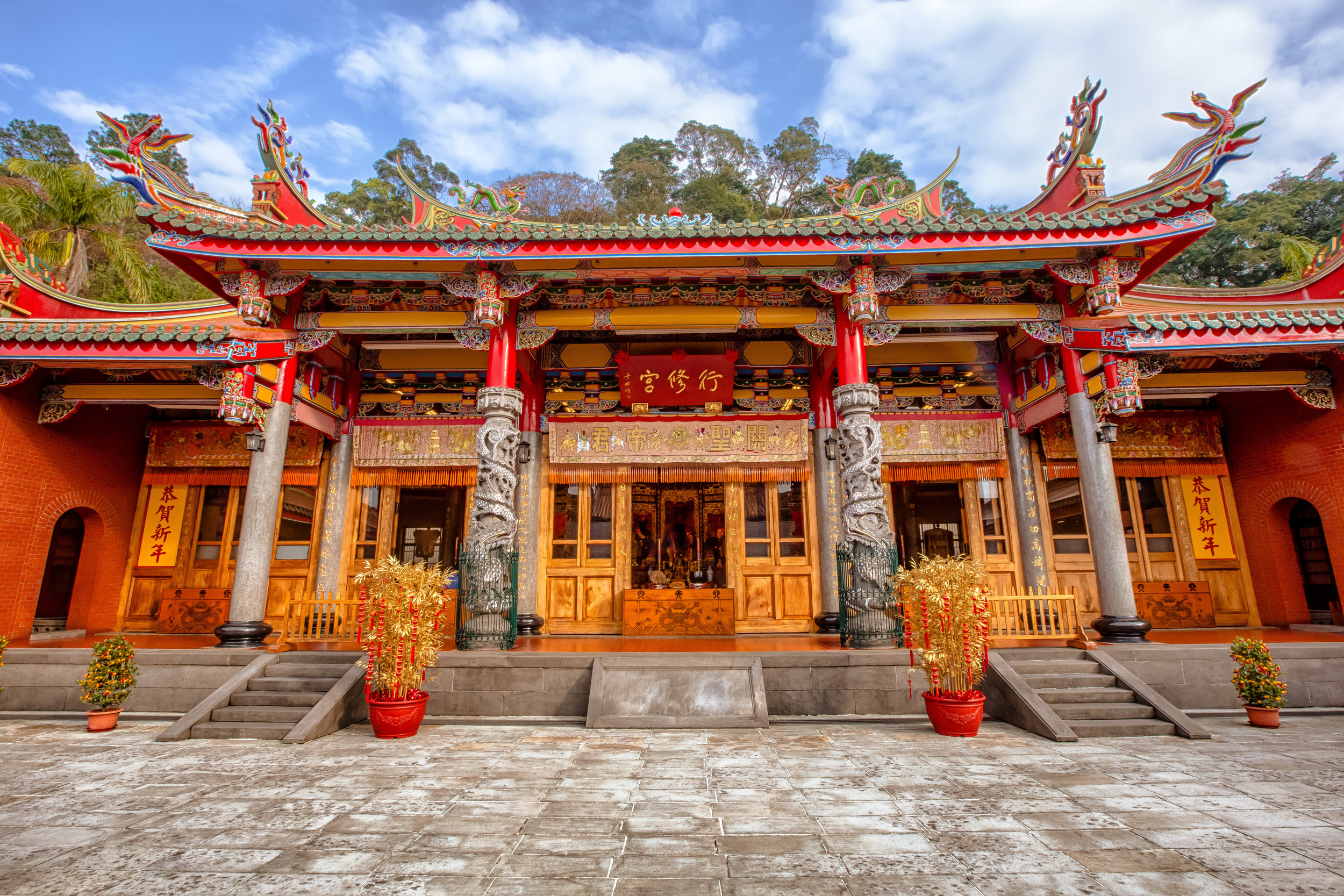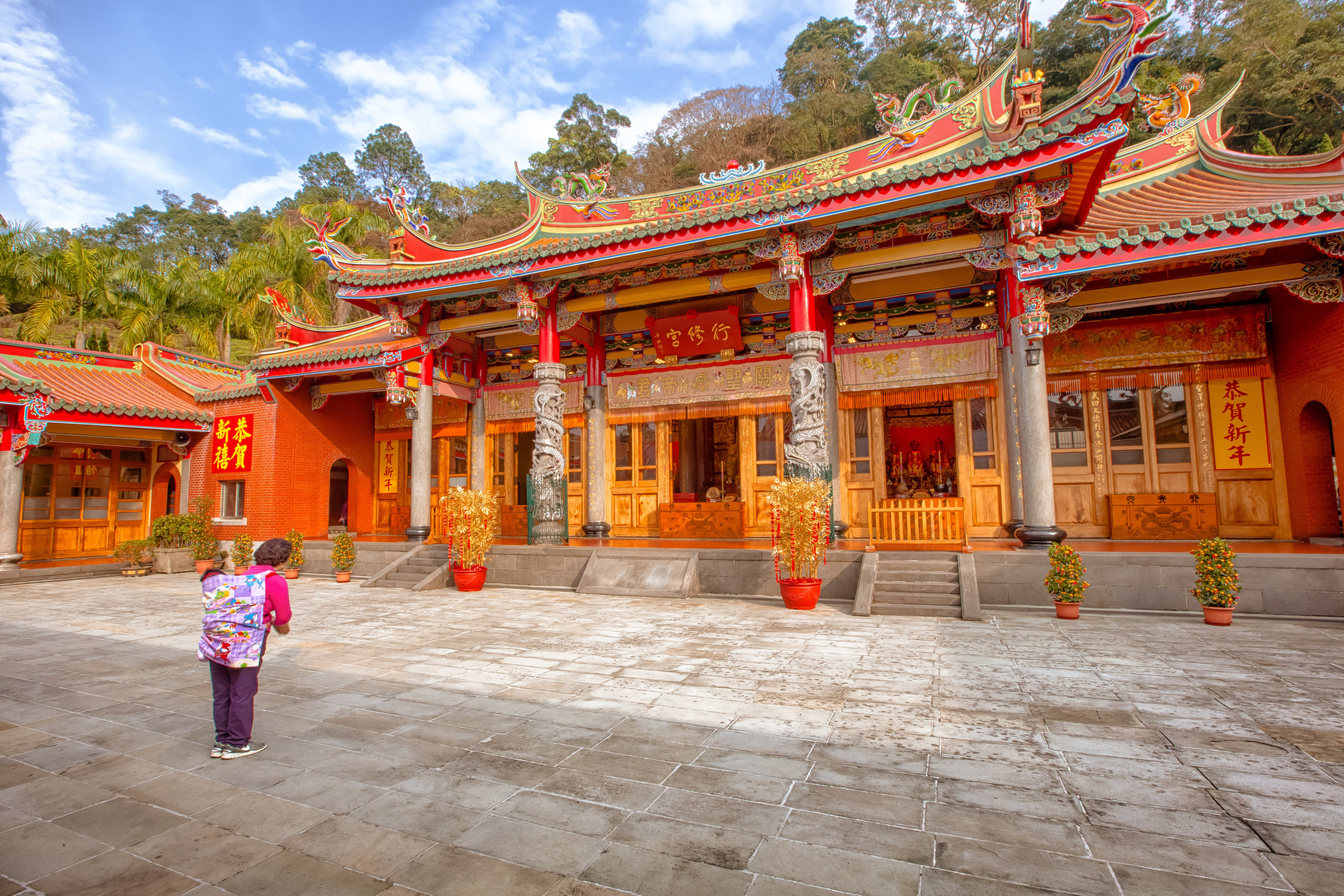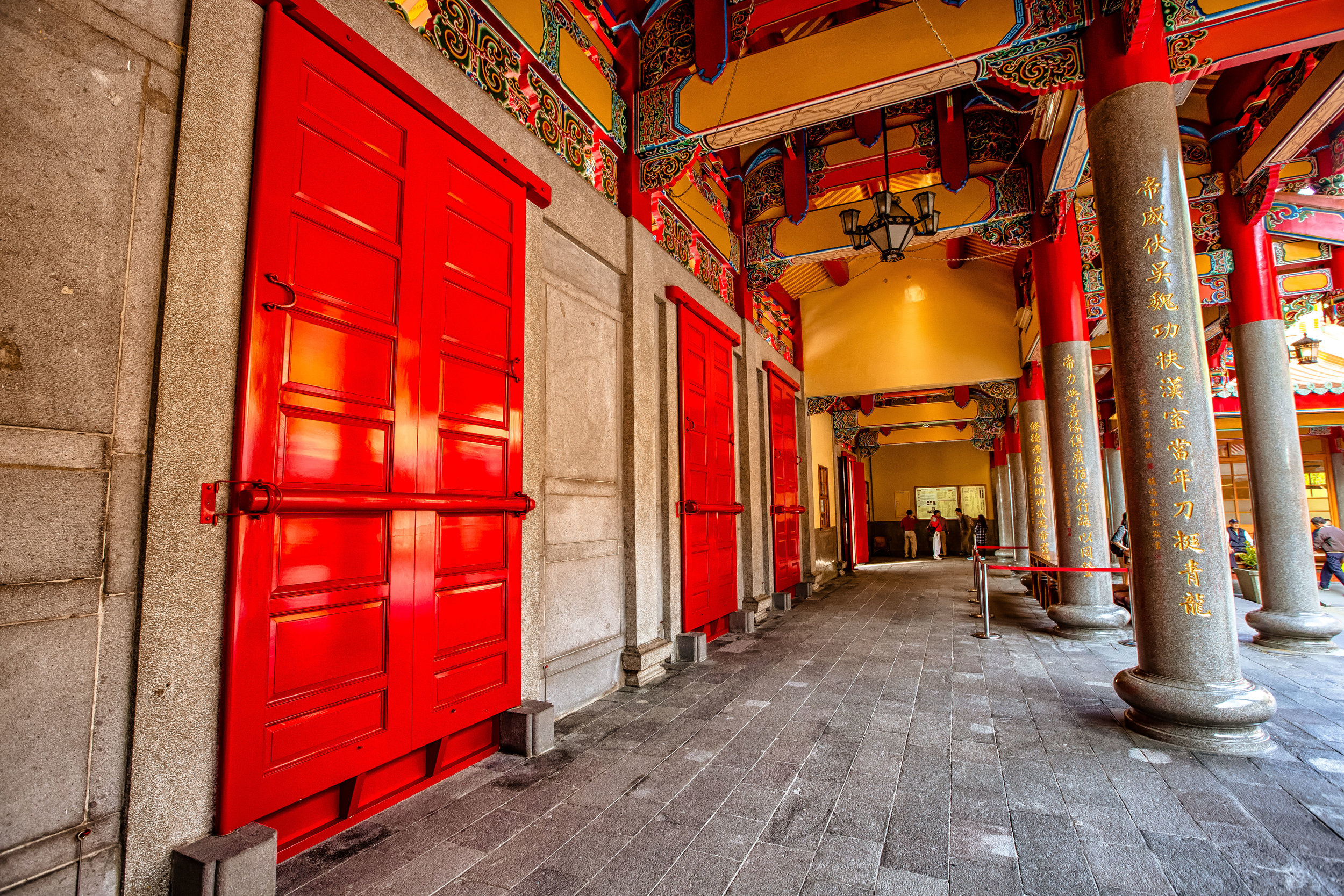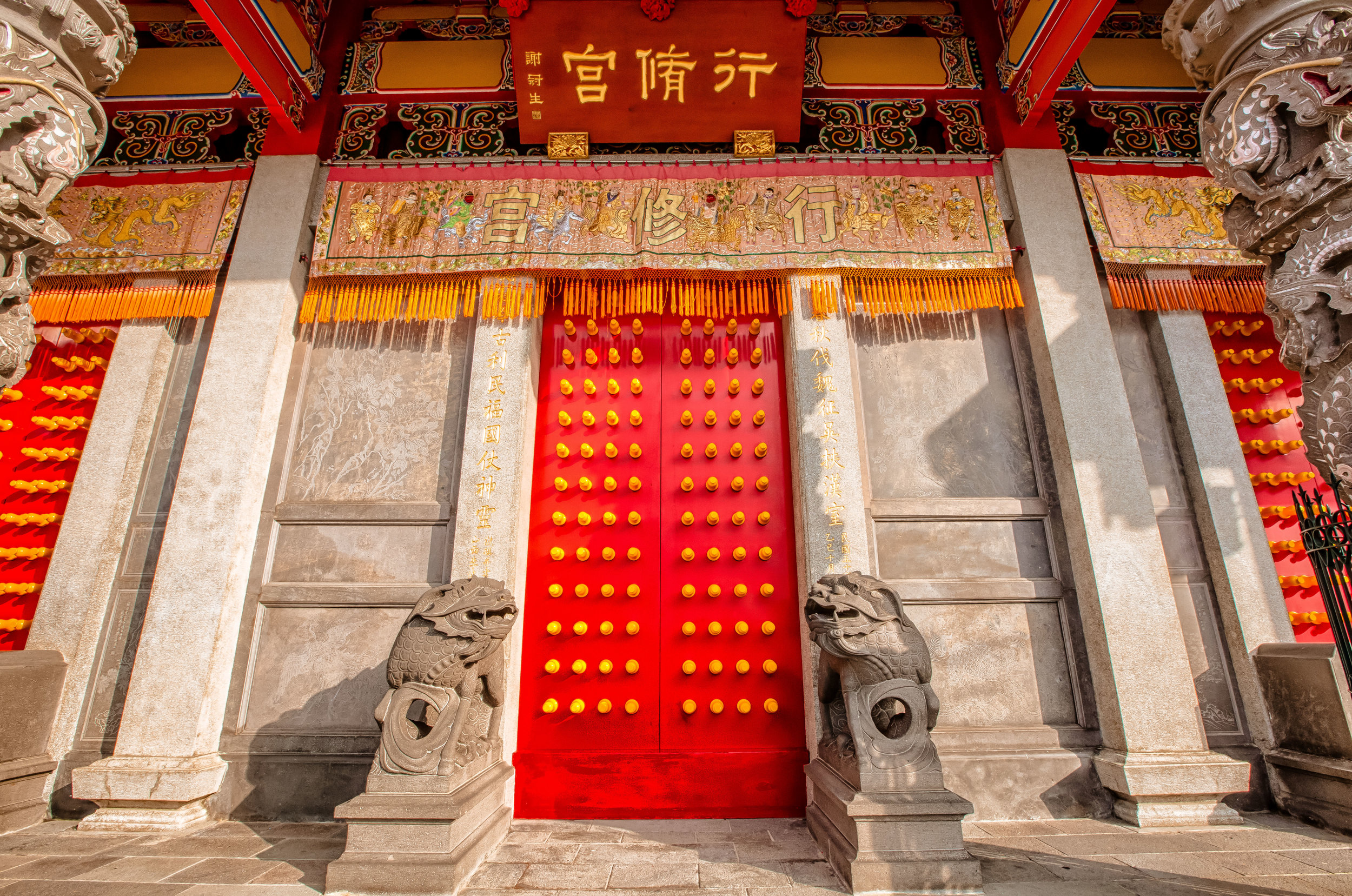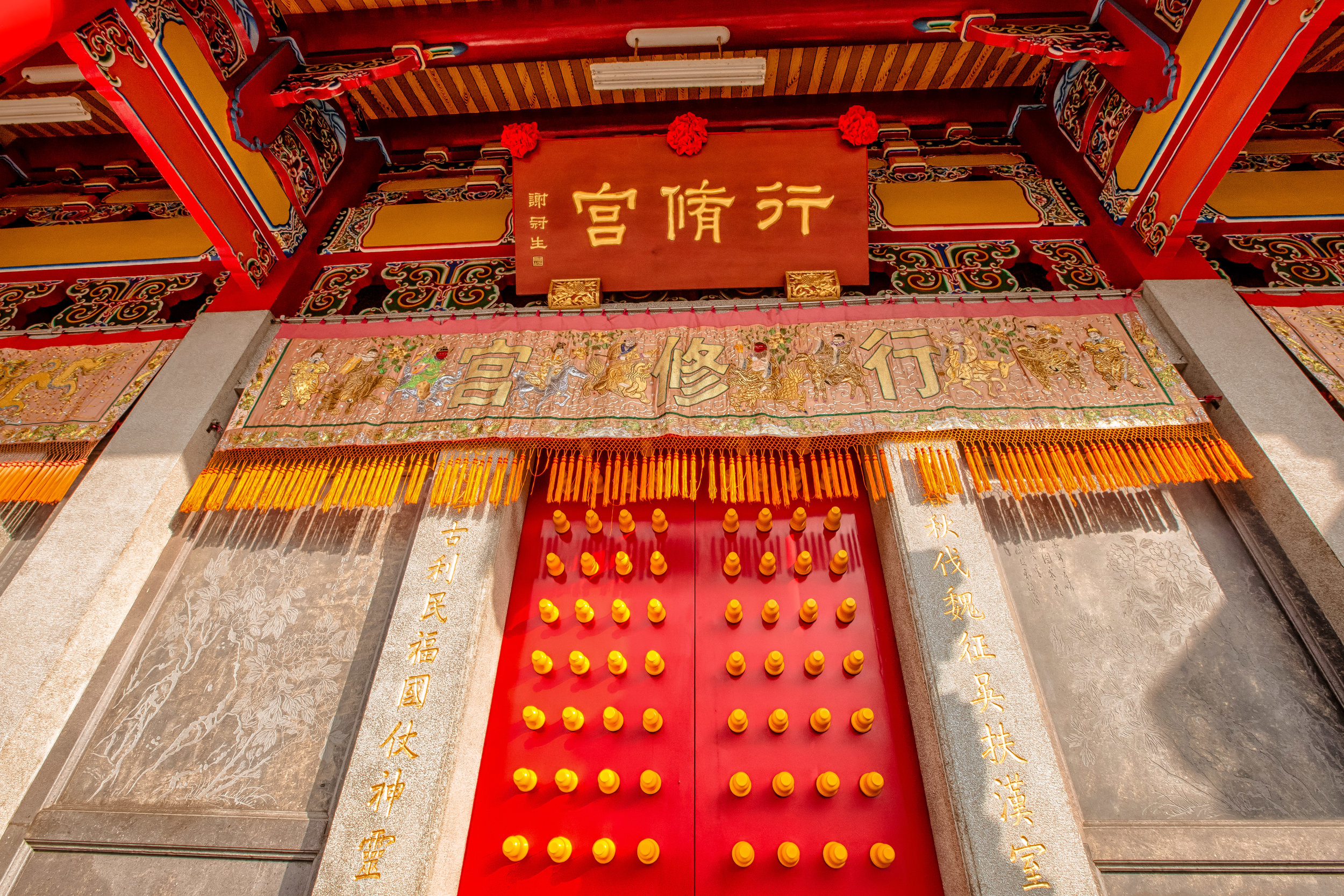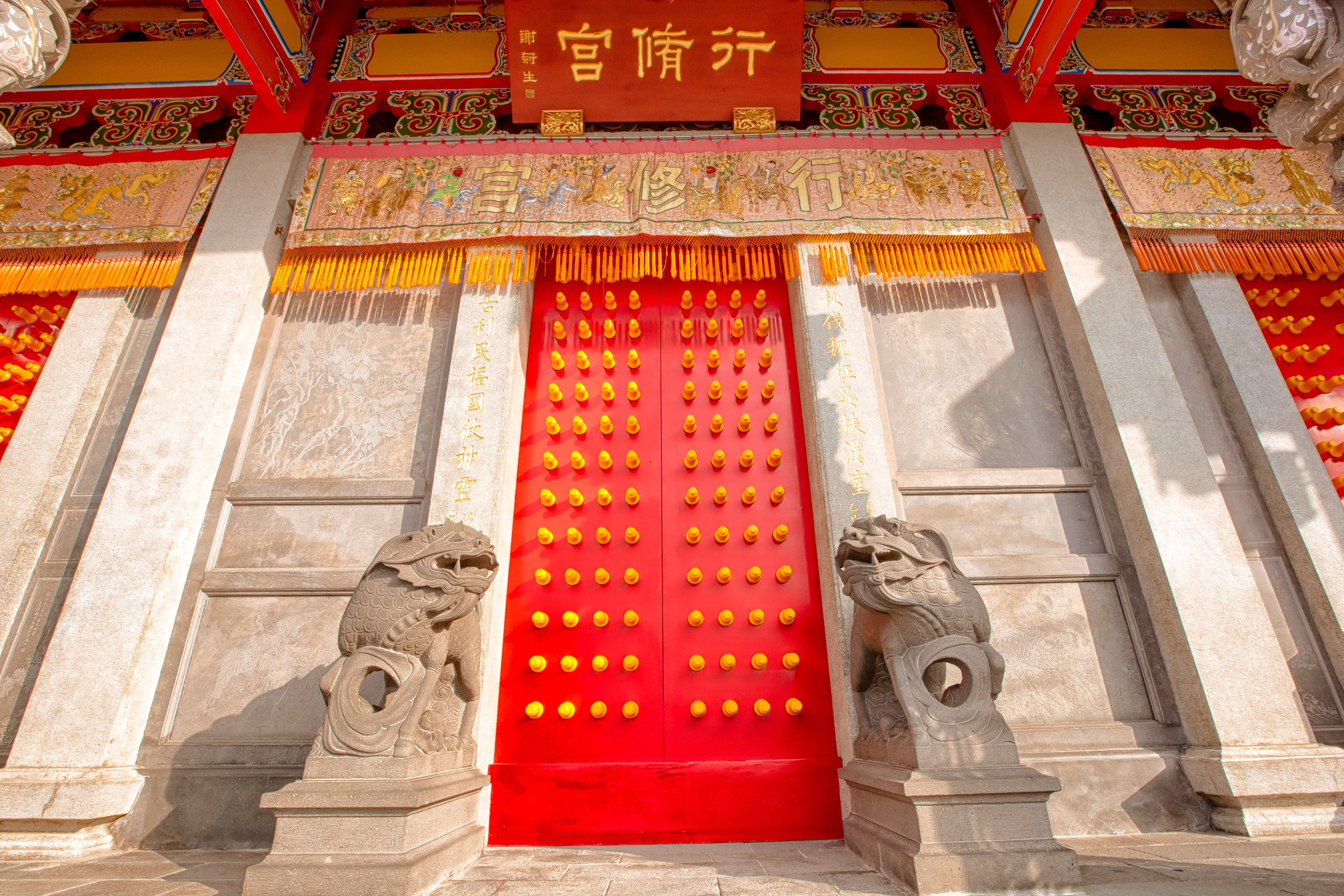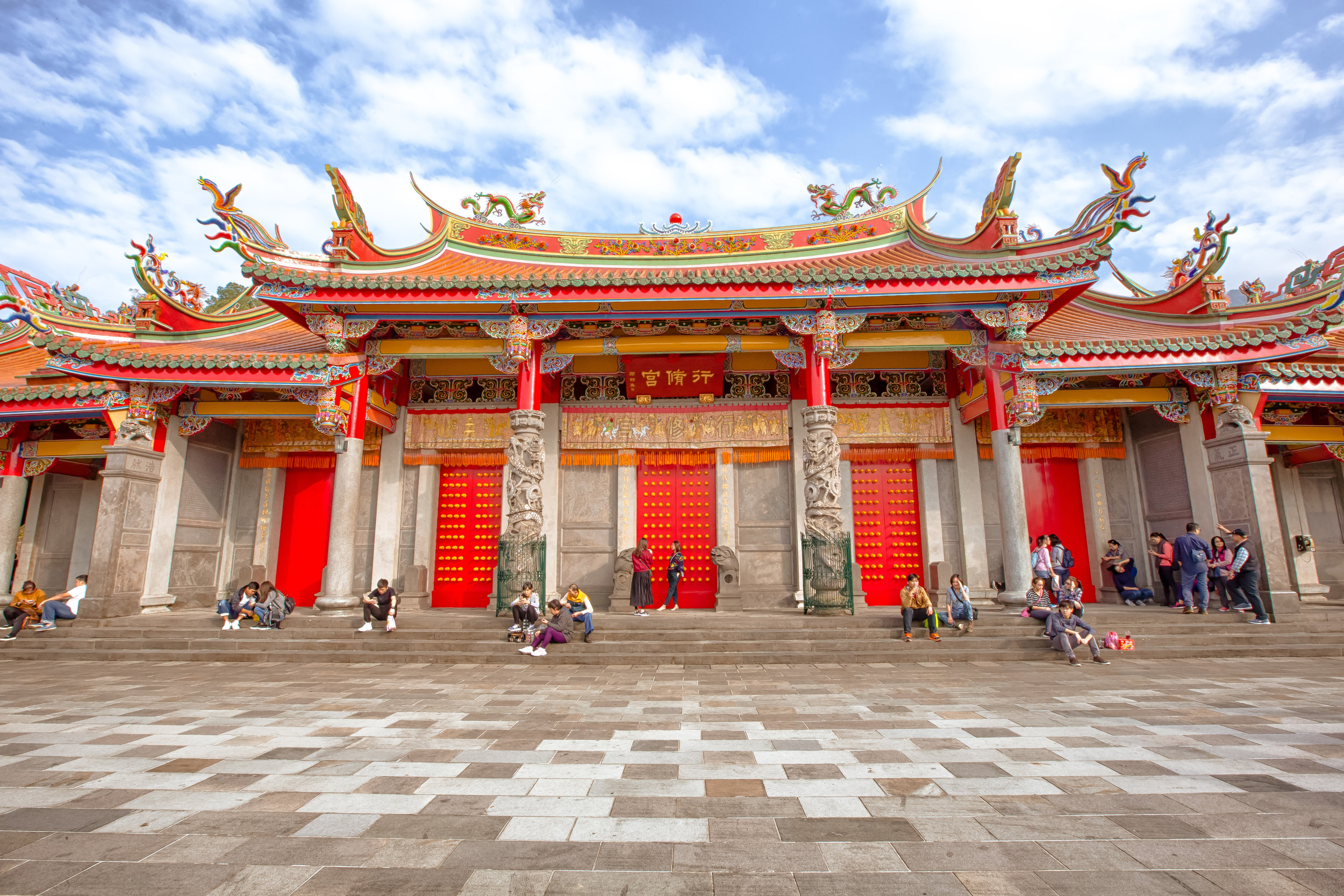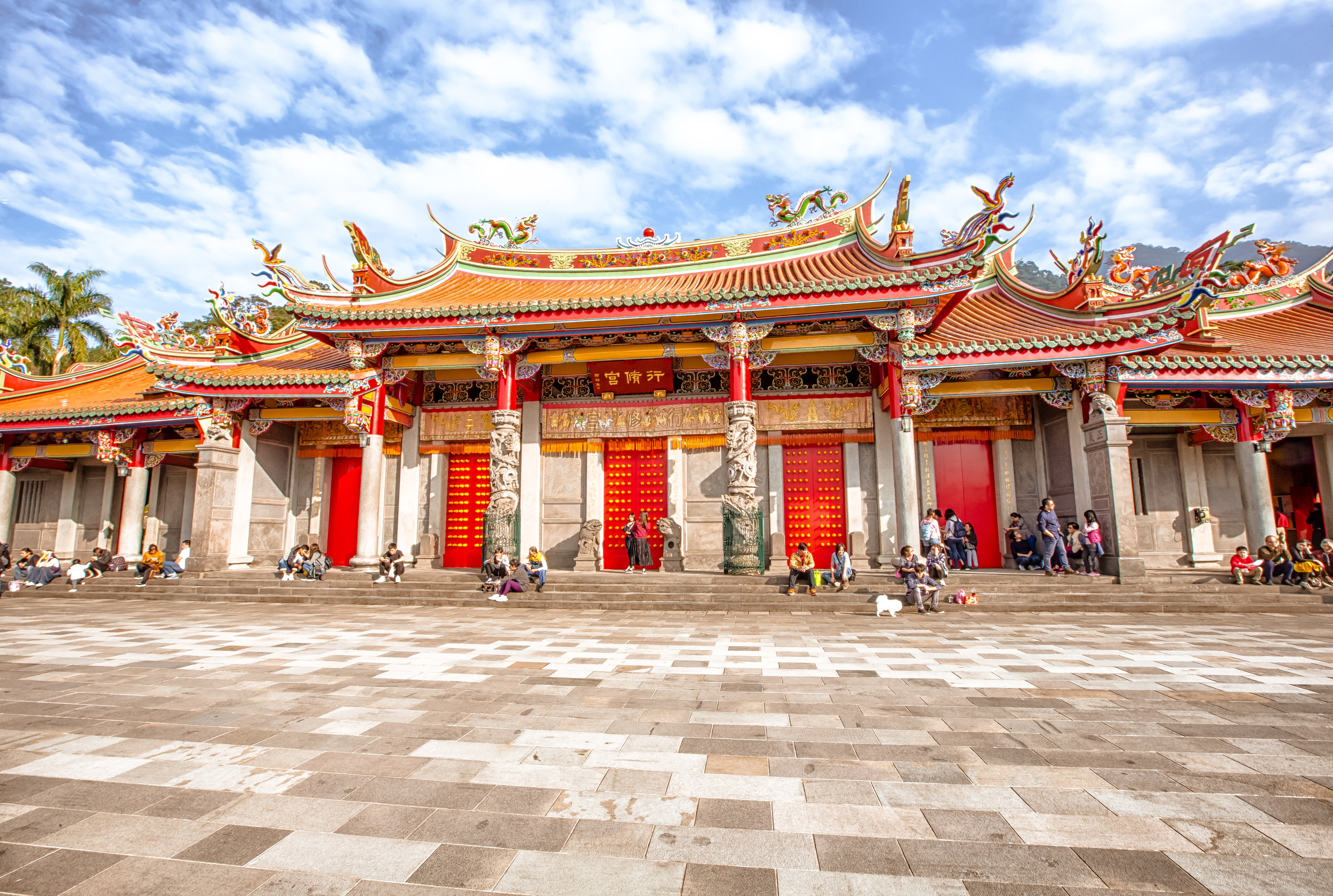While in the process of doing research for my recent post about Taipei's popular Xing-Tian Temple, I was surprised to learn that the popular religious and tourist landmark was the headquarters of an organization that consisted of three temples, several libraries and a hospital which were all built thanks to the charitable donations of the organization and its vast group of followers.
Though most temples in Taiwan achieve "famous" status due to their age and their historical significance - Xing-Tian Temple has been able to become one of the most highly-visited places of worship in Taipei and also a popular destination for people who are visiting the city and want to experience a bit of Taiwanese culture in action. According to the temple's own estimates, over 10,000 people walk through its doors each day making it one of Taipei's busiest tourist spots despite only being half a century old.
The temple has been able to use its relative youth to its advantage and has taken a leadership role in promoting progressive policies that aim to help protect the environment. The organizations decision to ban the usage of burning incense and paper throughout each of its three temples ultimately caused a ripple effect among some of the other larger temples in Taipei which have been reluctant to change but have since made plans to follow suit and contribute to help make Taipei a more environmentally friendly place to live!
While Xing-Tian temple gets the majority of the attention - the other two temples that belong to the organization are equally grand and visually very similar. These two gems have not really become tourists attractions in the same way that Xing-Tian temple has but are equally worthy of receiving the same amount of attention.
Xing-Xiu Temple (行修宮) is nestled in the mountains near New Taipei City's Sanxia district (三峽區). The area which is known as "Baiji" or White Chicken (白雞) is one that is known historically for the coal mining industry (of which there are still a few in operation) and is significant for the Hsin-Tian organization (恩主公) because its founder Master Hsuan Kung (玄空師父) was brought up and made a fortune in the mining industry before becoming a popular religious figure.
Sanxia - Sanxia Old Street | Qingshui Temple | Wuliaojian | Manyueyuan | Dabao River | Kite Mountain
The construction of Xing-Xiu Temple started in 1962 and was finished three years later in 1965. This means that it actually predates its popular Taipei sister-temple by a couple of years but is still not the oldest temple in the group as the Beitou branch (北投行天宮) opened its doors to the public a few months earlier. All three temples however were built within a few years of each other making their age somewhat insignificant.
When it comes to the design of the temple, Sanxia's Xing-Xiu Temple is almost an identical twin to what you see in Taipei - The only major difference is that one is situated within a large metropolitan city while the other sits on the side of a mountain meaning that the environment that surrounds the temple makes it seem much larger than it actually is.
When you arrive at the temple you are greeted by a large market where vendors are set up selling various types of local food, vegetables and products that make it seem almost like a carnival-like atmosphere.
Once you pass by market you have to walk up a short but steep set of stairs that brings you to the temple - The first thing you'll notice when you arrive is that it looks brick-for-brick identical to the temple in Taipei. I seriously had to step back for a minute and look around to realize that I wasn't actually just visiting Xing-Tian Temple in Taipei for the hundredth time.
Even though the two temples are almost identical there are a few noticeable differences - The first is that the wall that surrounds the Taipei temple is non-existent and is replaced by a beautifully made natural garden on either side with the courtyard in front giving the area a much more natural look. The next difference is that there are two smaller buildings on either side of the main temple that act as shrines to the Earth God (福德正神) and another dedicated to the late founder of the temple Master Hsuan Kung.
One of the most attractive differences between the two however is that there are several hiking routes behind the temple on popular Baiji Mountain Hiking Trail (白雞山登山步道). Even if you aren't interested in taking the four kilometre hike up the mountain you can walk up the mountain for a few minutes to a platform behind that temple complex that gives spectacular views of the temple grounds. The short walk up the hill made the day for me as I was able to see the temple from above with the mountainous landscape all around it.
Shrines
Xing-Xiu temple is dedicated primarily to Lord Guan (關聖帝君) who is also known as Guan Yu (關羽) or Guan Gong (關公) and is one of the most recognized figures within Chinese culture. Guan was a leading general who served under Liu Bei (劉備) during the Three Kingdoms period and is now immortalized as a deity within Taoism and has also become a celebrated figure within Confucianism and Buddhism as well.
Guan who lived from 160-221AD was deified by Taoists sometime during the Sui dynasty (隋朝) between 581 and 618 and is worshipped in Taiwan, China, Hong Kong and pretty much any place where people of Chinese descent have migrated.
Stories about Lord Guan have been passed down through the generations and he has become somewhat of a legend thanks to the "Romance of the Three Kingdoms" (三國演義) a masterpiece of ancient Chinese literature.
The important thing to remember about Guan Yu however is that while there are a lot of superlative stories that deal with his exploits, he is widely respected within Chinese culture as the epitome of loyalty and righteousness. Today he is not only worshipped as an all-knowing and all-powerful deity but also as the god of war and a patron saint of business people and scholars. This is why statues of Lord Guan have become almost synonymous with Chinese businesses around the world as his presence is thought to help bring success.
As the god of war, he has also become a patron figure for the many different organized criminal groups within Chinese society and paying respect to Lord Guan is important for keeping discipline within the ranks.
The shrines at Xing-Xiu Temple differ a bit from Xing-Tian Temple so if you take a look you're going to see something that you probably won't see at other temples in Taiwan. The part that might amaze you the most is that the right shrine has statues dedicated to a few figures that you may not have seen before and have names that might have you scratching your head if you understand Chinese. The confusing thing is that the names "聖父“ or "聖母“ are typically used for Christians when we talk about "God" or "Mary" but in this case they are referring to the family of Lord Guan. The left shrine has statues dedicated to Lord Guan's Grandfather (聖公), Father (聖父), Grandmother (聖母) and Mother (聖媽).
The main shrine and the one most visible to people on the outside is dedicated to Lord Guan's son (關太子平), Lord Guan (關聖大帝) and Zhou Cang (周恩師倉) who was one of Lord Guan's right hand men during the Three Kingdom's Period.
The shrine to the right has statues dedicated to people who were also important during the Three Kingdoms period and were close allies and friends of Lord Guan. The three statues are dedicated to master strategist Zhuge Liang (諸葛武侯孔明), Kingdom of Shu Emperor Liu Bei (漢昭烈帝劉備), and General Zhang Fei (桓侯大帝張飛).
The shrine at this temple is somewhat more interesting if you've read the Romance of the Three Kingdoms (三國演義) or have seen any of the various movies that have been made about it, including the most recent Red Cliff (赤壁) which did an excellent job portraying the characters which are enshrined at this temple.
Temple Disciples (效勞生) / Cleansing the Spirit (收驚)
One of the most noticeable aspects of a visit to any of the three temples belonging to this organization are the blue-robed "Xiaolaosheng" (效勞生) or “helpers”. In the past the helpers would walk around with large bouquets of incense to hand out to people who came to the temple to pray but today their roles have changed a bit in order to reflect the environmental policies of the temple.
They continue to be a constant fixture of the temple and no matter when you go or what time of the day you are there they will always be there providing services to the people who visit. While most temples in Taiwan have volunteers of this sort, Xingtian Temple is a bit different in that the "helpers" are a much more organized group who perform quite a few duties throughout the temple - Its common to find them reciting sutras, chanting verses, assisting visitors, answering questions and performing Taoist rituals.
The helpers stated purpose is to work for the 'benefit of others as well as cultivate their hearts and minds'. While "helper" is a simple translation, you might want to just refer to them as 'Temple Disciples' to make things a little more easy to understand. The helpers comes from all walks of life and speak many languages, so if you have a question they will be happy to answer but before they do so they'll say "ping'an" (平安) which means "safety" as a way to give a blessing to anyone who they come in contact with.
One of more interesting duties for the helpers is for a ritual called "recalling frightening souls" (收驚) which is an age-old Taoist ritual meant to help purify oneself and bring calm to your soul. The thought process behind it is that from time to time, something might happen which frightens you so much that your soul (one of them) attempts to 'escape' from your body. It could be anything from a good scare during a horror movie to a close call on the road. If you feel yourself suffering from this sort of shock, it is quite normal for people to visit a temple to have this ritual performed on them.
The ritual which is a 'cleansing' or even an 'exorcism' of sorts is meant to calm your soul and bring it back into your body so that you are more at ease. The women who perform the ritual at this specific temple will wave a stick of incense around all of your chakra points and whisper a prayer signifying that it is safe for your soul to return to your body.
Design
As mentioned above, the design of the temple is almost identical to the one in Taipei. If you walk into this temple having visited some of Taiwan's other Taoist temples, the simplicity will be a stark contrast to the amazing detail of some of Taiwan's other places of worship. While it is a young temple and a simple one at that, it doesn't mean that there aren't minor details in the design that you shouldn't pay attention to and appreciate. The minor details are the areas of this temple where you're most likely to notice the slight design differences.
The temple was designed in a traditional way with a front hall (前殿) and a main hall (正殿) which are joined by two long corridors which are known as the "guardian dragons" (護龍). The middle of the temple which serves as the courtyard is where people will go to pray. The main hall of the temple is off-limits to guests, so if you want to see the main shrine you are going to have to peer in from the courtyard.
While the temple is quite plain the things to notice within would be the dragons and phoenixes on the roof which act as guardians which ward off evil. Dragons specifically help to prevent fires and pray for rain while phoenixes appear when he earth is at peace and have long been considered auspicious symbols within traditional Chinese culture.
When it comes to stone work, Taiwanese temples spare no expense and this temple is no different. The temple boasts twenty-seven beautiful stone columns in the front hall which have beautiful calligraphy poems carved into them by various Taiwanese artists. The poems on the pillars are meant to glorify Lord Guan and are an important addition to the design of the temple.
Apart from the columns, you'll find two stone "Qilin" (麒麟) at the main entrance to the front hall. Taiwanese temples are typically protected by stone lions but this one is a bit different - Qilin which are also known as Chinese unicorns are mythical Chinese creatures that have the head of a dragon and the body of either an ox, deer, or horse with scales and hooves. While extremely cool-looking, Qilin symbolize prosperity, serenity and that the nation is at peace which I think fit in well with this temple.
If you have been to Xing-Tian temple in Taipei it is quite easy to compare the two - With the temple in Taipei you have the convenience of riding the MRT and walking a short distance to reach the temple. Xing-Xiu Temple on the other hand is a bit more difficult to get to but I'd argue that a visit to this temple is actually a much more peaceful and enjoyable experience.
The temple has the aesthetics that you're familiar with in Taipei but blends in extremely well with the natural environment around it. When you think of peaceful Zen-like temples nestled in the mountains, you'd probably be thinking of a place like this. If you are in the Sanxia area and have the opportunity to visit, make sure check this one out!




